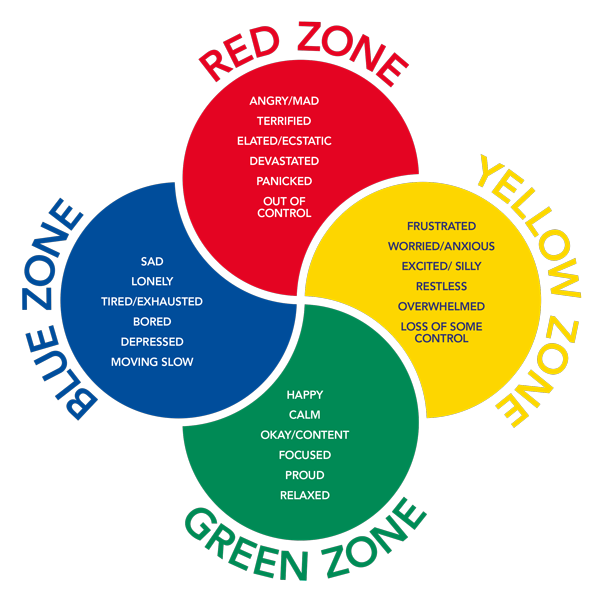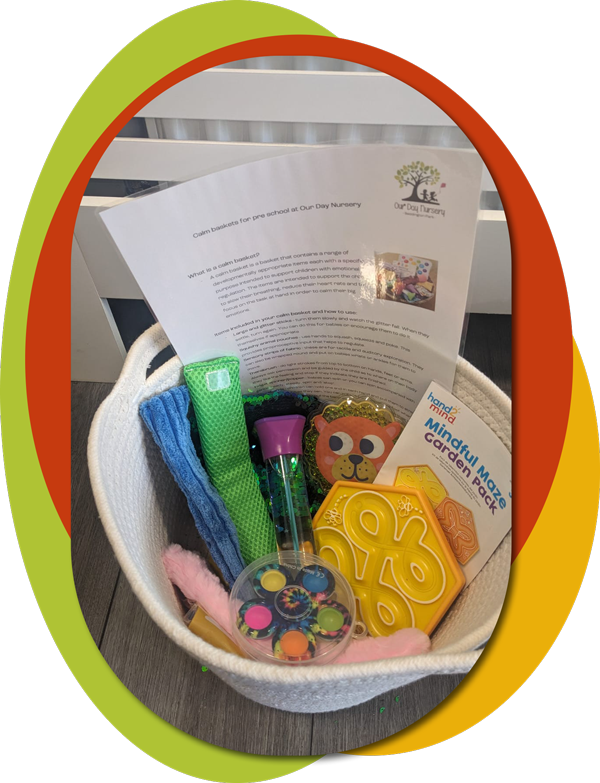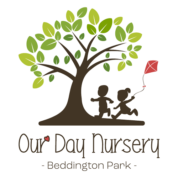Emotional regulation at Our Day Nursery
WHAT - Emotional regulation is the ability to manage your own emotional state. It refers to being aware of emotions and then having strategies to manage them effectively to ensure that one’s emotional state does not negatively impact them day to day.
WHO - everyone! Everyone feels a variety of emotions so we all need support with how to manage such an array of feelings, particularly the young children we are working with who are still developing the part of their brain that manages big feelings.
WHERE - everywhere, emotional regulation takes place anywhere and everywhere. Emotions can be very unpredictable so we need to learn to manage them everywhere we go.
WHEN - at any time, when a person has become emotionally dysregulated is when they may require support strategies in order to become regulated again. There may be specific triggers for emotions so sometimes you may be able to pre-empt a child becoming dysregulated and put proactive strategies in place to support them.
WHY - the ability to regulate your emotions because how we think and feel impacts everything about our day to day function. We respond to situations based on how emotionally regulated we are.

Our approach - Zones of regulation

At Our Day Nursery we are incorporating Zones of Regulation into our approach to supporting our children in managing their emotions. The Zones of Regulation provides an easy way to think and talk about how we feel on the inside and sorts emotions into four coloured Zones, all of which are expected in life.
GREEN
Happy, calm, ready, focused
YELLOW
frustrated, worried, anxious, excited
RED
Angry, mad, lost control of emotions
BLUE
Sad, low, sleepy, bored

In each room across the nursery you will find real life emotions photos of the children backed in these colours, supported by visual symbols.
If you would like to find out more please visit: https://zonesofregulation.com/

It is really important that we always acknowledge and validate children's feelings, it is also useful to label their feelings so that they can begin to understand what they are feeling, for example if a child cries because they want a toy someone else is using you may say 'I understand, you are sad because 'x' has the car and you want the car. It is hard to take turns. It's okay to feel sad or to cry'. Sometimes there can be a temptation to stop a child crying or to tell them they are okay, but in that moment they don't feel okay and we want them to know it's healthy to express their feelings and that we will be there to support them.

Our approach

Calm corners
In every room across the nursery we have created calm corners. These will look different in each room taking the children’s physical and developmental needs into account but the aim of these spaces is to create a safe space for children to access whenever they feel they need some support emotionally. These areas contain soft furnishings where children can relax as well as fairy lights to create a peaceful atmosphere.
Calm baskets
In every calm corner there is also a calm basket, these have been put together specifically to support children who have become dysregulated. When individual children need a little further support to regulate the use of the items can be modelled by an adult and over time we hope the children will then learn to use these strategies more independently. The following are some of the items included:
- Therabrushes and therpautty
- Mindful mazes to support breathing
- Sensory materials, pouches, timers
- Spinners and pop it toys

